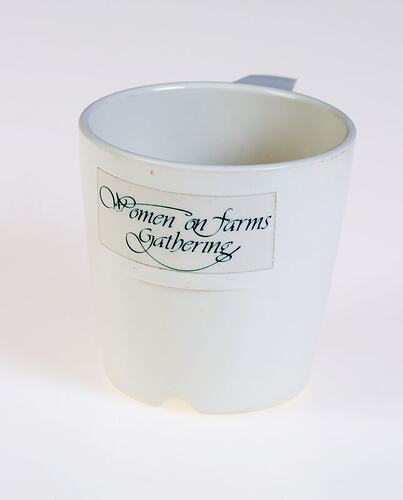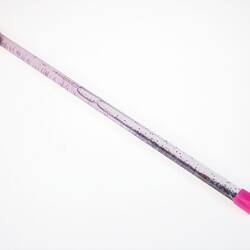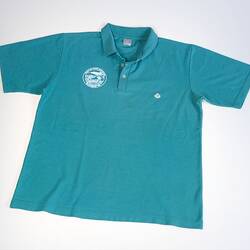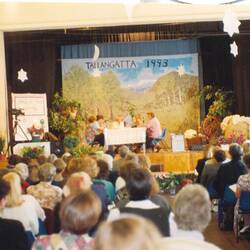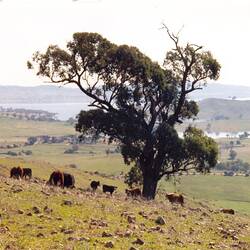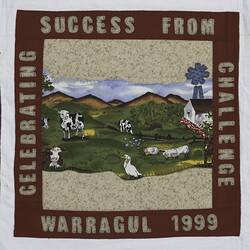Summary
Cream melamine mug given to participants of the 1993 Tallangatta Women on Farms Gathering. This was the first Gathering to have a memento mug, which was sourced and created by one of the Tallangatta Gathering committee members, Denise Kirk. The mugs were purchased from Murray Goulburn Kiewa factory then an Albury firm created the labels. Each person registered at the Gathering received one and were asked to use them over the weekend.
Ever since the 1993 Tallangatta Gathering, the mug has become a very practical recurring ritual of the Gatherings. Each participant is given a mug and must then use it for all catering events over the weekend, thus eliminating the need to hire extra crockery and someone to wash-up. It is also a souvenir to take home, reminding the participant of the Gathering weekend.
Part of Museums Victoria's Invisible Farmer Project Collection. The Invisible Farmer Project was the largest ever study of Australian women on the land, uncovering the histories and stories of Australian women in agriculture and addressing the absence of rural women in mainstream histories and museums. It began as a pilot project (2015-2016) and evolved into a three year (2017-2020) nation-wide partnership between rural communities, academic, government and cultural organisations, funded by the Australian Research Council.
Physical Description
Cream melamine mug made by 'EFM'. 7350- 66- 028-4161. Green scripted writing opposite the handle of mug.
Significance
The 1993 Tallangatta Gathering was the first gathering to use a mug. This was a practical way to demonstrate and promote environmental responsibility. It also gave participants a permanent souvenir of the Gathering. This practice has been continued ever since, with a key feature uniting all Victorian Women on Farms Gatherings being the tradition of giving gifts and souvenirs to participants. These gifts are usually handed to participants at the beginning of the Gathering during registration, and range from practical items - such as this mug - to other assorted items that are associated with the region that the Gathering is held, such as local foodstuffs, pamphlets and handcrafted goods. This tradition of gift-giving allows the local organising committee to showcase their region's produce, as well as to make their guests feel welcome from the outset of the Gathering weekend.
More Information
-
Collection Names
-
Collecting Areas
-
Acquisition Information
Donation from Ms. Denise Kirk - Tallangatta Women on Farms Gathering Organising Committee, Mar 2003
-
User
Ms. Denise Kirk - Tallangatta Women on Farms Gathering Organising Committee, Tallangatta, Victoria, Australia, 2 Apr-4 Apr 1993
-
Creator
Victorian Women on Farms Gathering, Tallangatta, Victoria, Australia, 1993
-
Inscriptions
Text: Women on Farms/Gathering.
-
Classification
Agriculture & rural life, Community activity - women on farms gathering, Souvenirs
-
Category
-
Discipline
-
Type of item
-
Keywords
Agriculture, Gender Issues, Globalisation, Politics, Rural Life, Work, Women on Farms Gatherings
